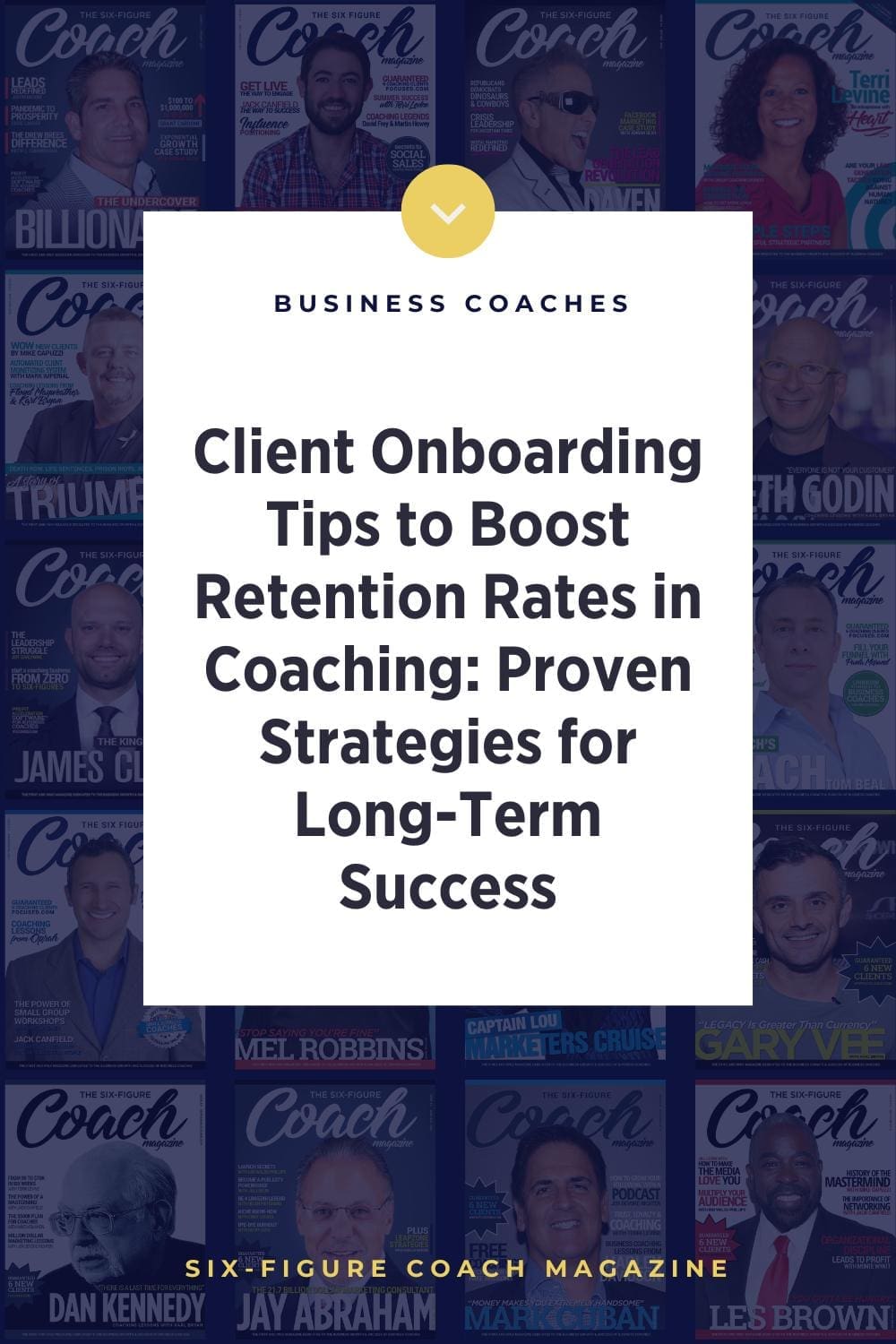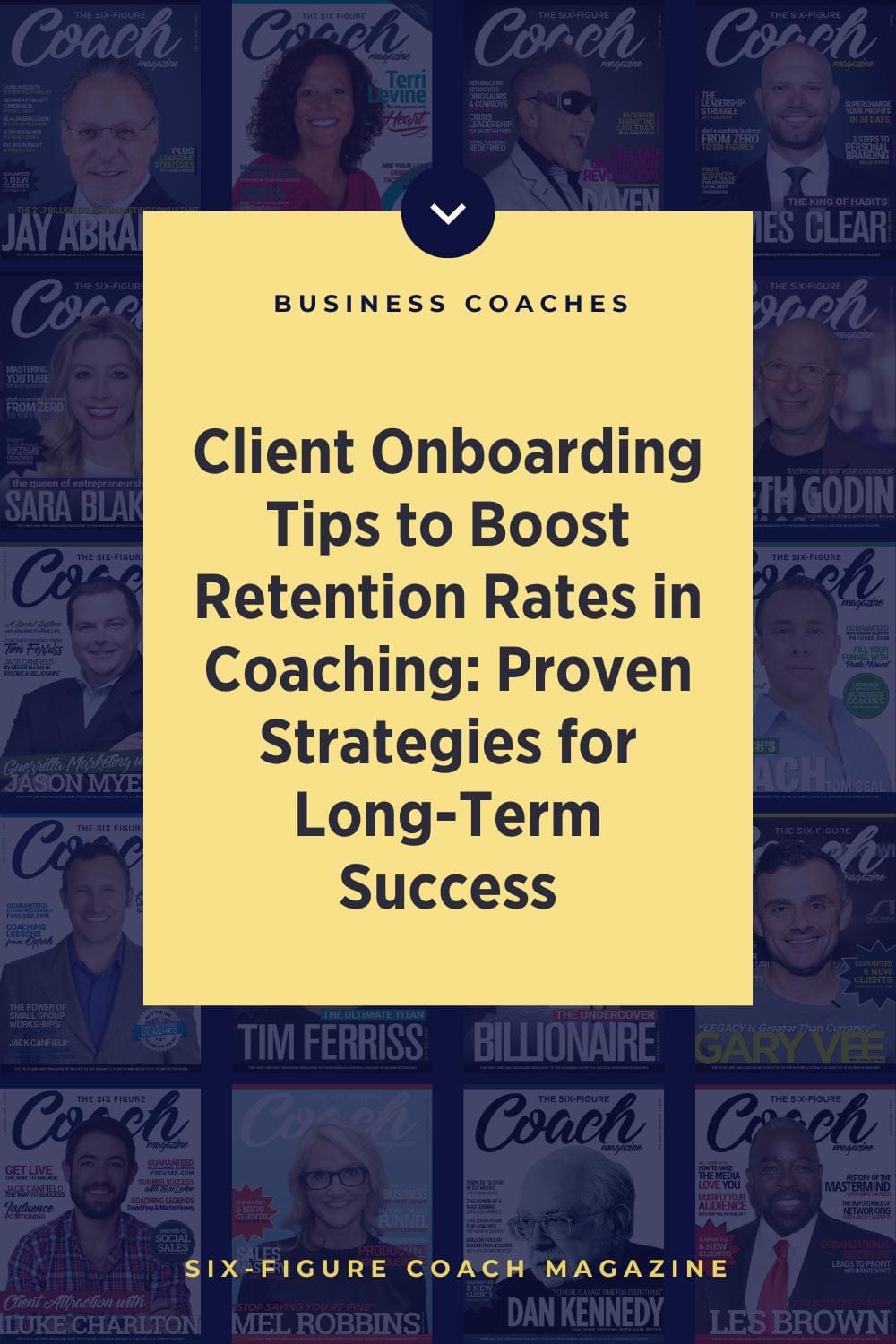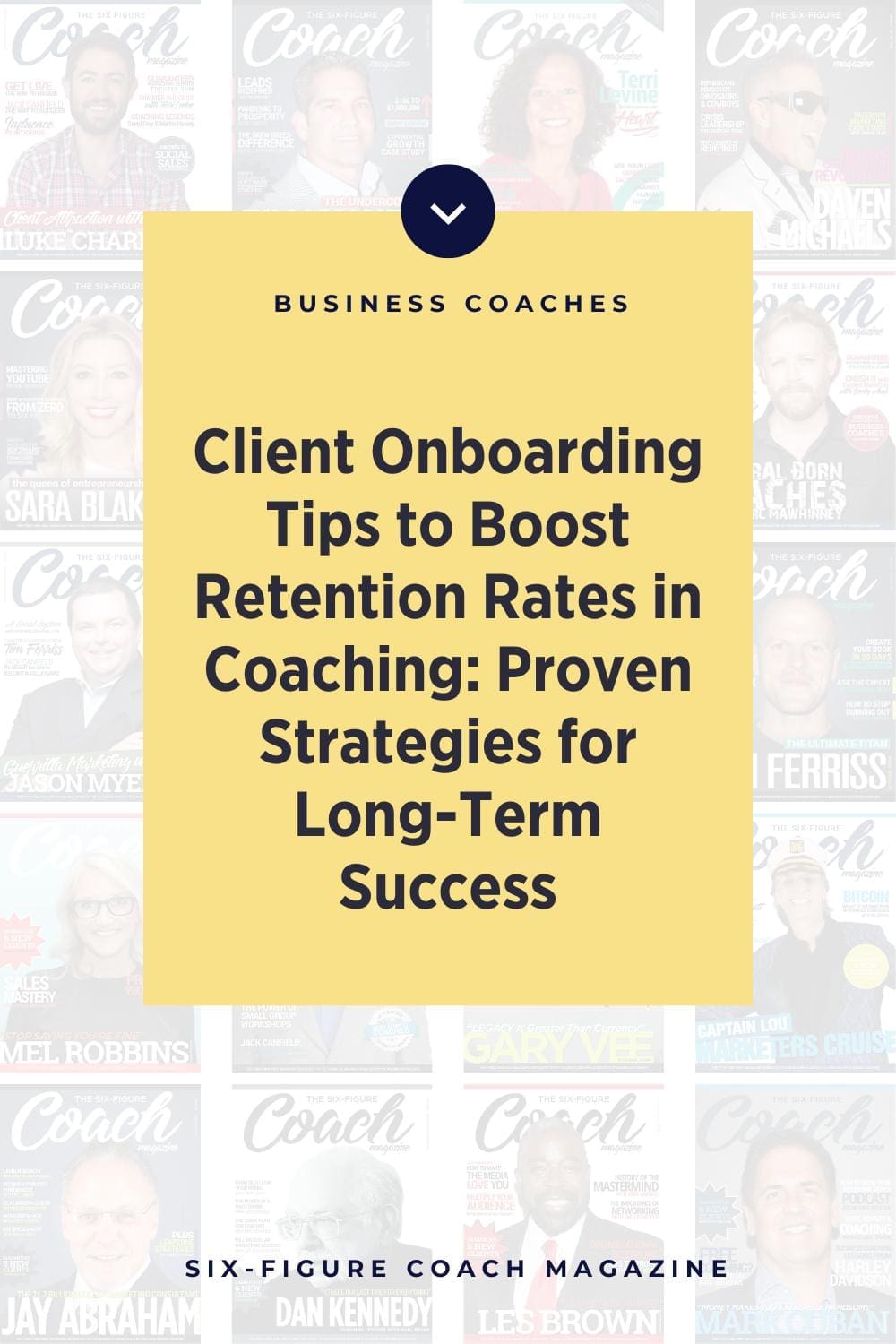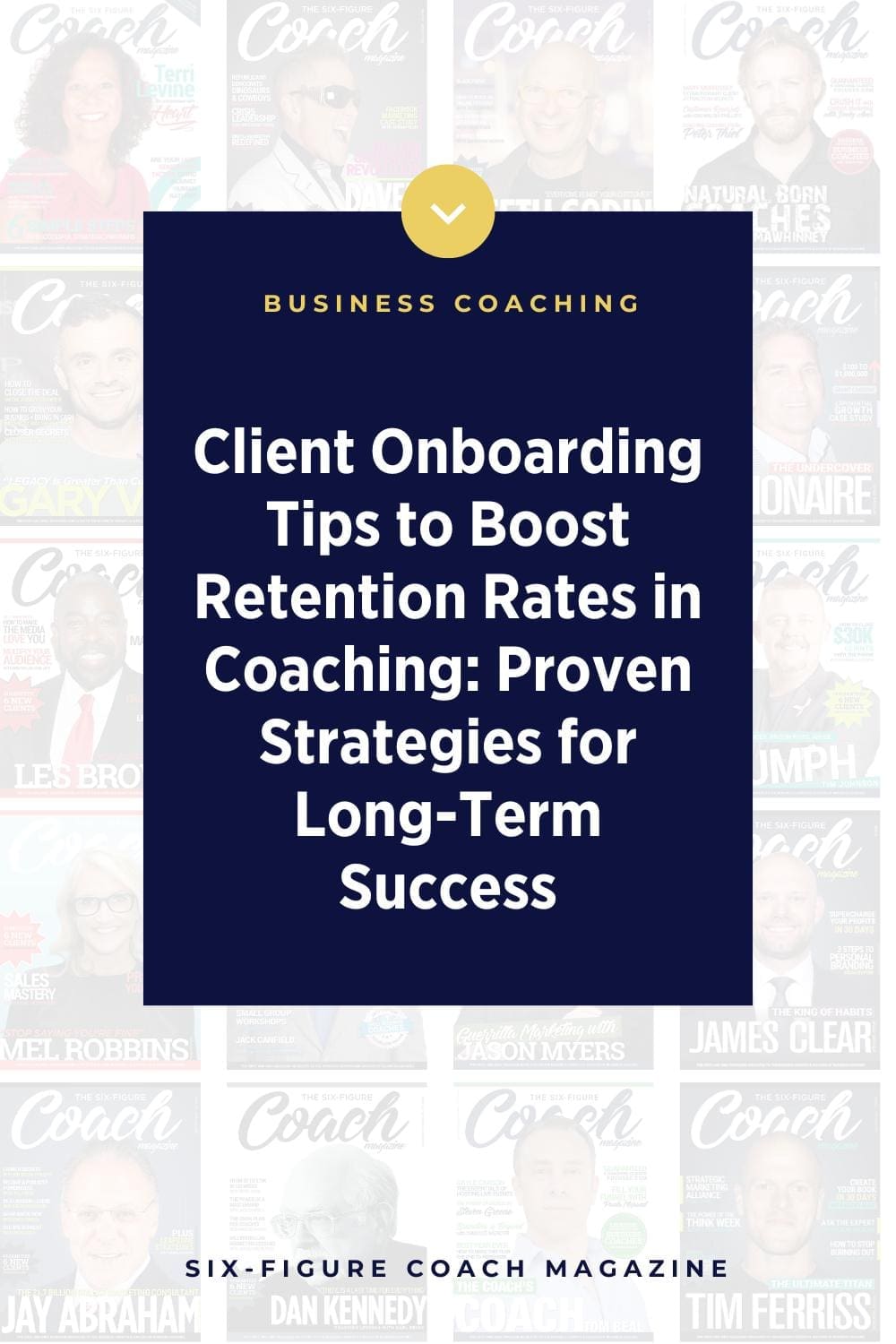Client Onboarding Tips to Boost Retention Rates in Coaching: Proven Strategies for Long-Term Success
Client onboarding is a key step in building strong relationships with coaching clients. A good onboarding process sets the stage for success and can lead to higher retention rates.
A well-designed onboarding process helps coaches understand their clients’ needs and goals. This allows them to create tailored plans and show value from the start. Clear communication during onboarding also helps set realistic expectations for both parties.
Effective onboarding strategies include welcome packets, goal-setting sessions, and regular check-ins. These tools help coaches gather important information and keep clients engaged. By investing time in onboarding, coaches can boost client satisfaction and increase the chances of long-term partnerships.
Understanding the Client Onboarding Process
Client onboarding sets the stage for a successful coaching relationship. It shapes the client’s first impression and lays the groundwork for future interactions. A well-designed onboarding process can boost client satisfaction and retention rates.
Defining Client Onboarding in Coaching
Client onboarding is the process of welcoming new clients and helping them get started with coaching services. It begins when a client signs up and ends when they’re fully engaged in the coaching program. This process typically includes:
- Collecting client information
- Setting goals and expectations
- Explaining the coaching process
- Providing resources and materials
A smooth onboarding experience helps clients feel valued and prepared. It also gives coaches the information they need to tailor their approach.
Setting the Right Expectations
Clear expectations are key to a positive coaching relationship. During onboarding, coaches should:
- Discuss the client’s goals and desired outcomes
- Explain the coach’s role and responsibilities
- Outline the client’s responsibilities
- Set a timeline for achieving milestones
Being upfront about what clients can expect helps prevent misunderstandings later on. It also shows that the coach is organized and professional.
Importance of First Impressions
The onboarding experience forms a client’s first impression of the coaching service. This initial interaction can greatly impact their decision to continue with the program. To create a positive first impression, coaches should:
- Be prompt and prepared for the first meeting
- Show genuine interest in the client’s goals
- Demonstrate expertise and professionalism
- Provide a warm and welcoming atmosphere
A strong first impression builds trust and confidence in the coaching relationship. It sets the tone for future sessions and increases the likelihood of client retention.
Designing Your Onboarding Workflow
A well-designed onboarding workflow sets the stage for successful client relationships. It helps coaches create a smooth, efficient process that makes new clients feel valued and prepared for their coaching journey.
Creating a Client Onboarding Checklist
A client onboarding checklist keeps the process organized and ensures nothing is missed. Coaches should include key steps like:
– Welcome email or call
– Sending intake forms
– Scheduling the first session
– Providing resources or homework
The checklist can be digital or physical, depending on the coach’s preference. It’s important to review and update the checklist regularly based on client feedback and results.
Coaches may want to create different checklists for various coaching programs or client types. This helps tailor the experience to each client’s needs.
Utilizing Automation for Efficiency
Automation can save coaches time and improve the client experience. Some areas where automation proves useful include:
– Sending welcome emails
– Scheduling reminders
– Delivering intake forms
– Providing access to resources
Many coaching platforms offer built-in automation features. Coaches can also use tools like Zapier to connect different apps and create custom workflows.
It’s crucial to find the right balance between automation and personal touch. Automated messages should still feel warm and personalized.
Tailoring the Onboarding Experience for Group Coaching
Group coaching requires a unique onboarding approach. Coaches should focus on:
– Creating a sense of community
– Setting clear expectations for group dynamics
– Providing information about session structure
One effective strategy is to host a welcome webinar for new group members. This allows coaches to introduce themselves and the program while answering questions.
Coaches may also consider creating a private online space for group members to connect before the first session. This helps break the ice and builds excitement for the program.
Building a Strong Coaching Relationship
A solid foundation between coach and client leads to better results and long-term engagement. Trust, open communication, and ongoing collaboration are key elements in fostering a successful coaching partnership.
The Role of Trust and Personal Connection
Trust forms the backbone of any coaching relationship. Coaches should create a safe space for clients to share their thoughts and feelings. This can be done by:
- Active listening without judgment
- Keeping conversations confidential
- Showing empathy and understanding
Building a personal connection helps clients feel more comfortable. Coaches can:
- Share relevant experiences
- Find common interests
- Remember important details about the client’s life
These actions show genuine care and interest, which strengthens the bond between coach and client.
Communication Channels and Collaboration
Clear and efficient communication is vital for a strong coaching relationship. Coaches should:
- Set up regular check-ins
- Use a mix of communication methods (e.g., video calls, emails, messaging apps)
- Respond promptly to client messages
Collaboration tools can enhance the coaching process. Some options include:
- Shared goal-tracking spreadsheets
- Project management platforms
- Online whiteboards for brainstorming
These tools keep both parties aligned and engaged in the coaching journey.
Ongoing Collaboration Beyond Onboarding
The coaching relationship doesn’t end after onboarding. Continuous collaboration helps maintain momentum and achieve long-term goals. Coaches can:
- Schedule periodic progress reviews
- Adjust strategies based on client feedback
- Celebrate milestones and achievements
Encouraging client independence is also important. Coaches should:
- Teach problem-solving skills
- Provide resources for self-learning
- Gradually reduce support as the client grows
This approach ensures clients feel supported while developing their own abilities.
Key Components of an Effective Onboarding Strategy
A solid onboarding strategy sets the stage for a successful coaching relationship. It helps build trust, align goals, and set clear expectations from the start.
Conducting a Thorough Discovery Call
A discovery call is the first step in getting to know a new client. This call helps coaches learn about the client’s needs, goals, and challenges. During the call, coaches should:
- Ask open-ended questions to get detailed answers
- Listen carefully to the client’s responses
- Take notes on key points
- Explain how coaching can help the client
The discovery call also gives clients a chance to ask questions about the coaching process. This helps them feel more at ease and ready to start their coaching journey.
Implementing an Onboarding Questionnaire
An onboarding questionnaire gathers important info about the client before coaching starts. This tool helps coaches:
- Learn about the client’s background
- Understand the client’s goals
- Identify potential roadblocks
- Tailor the coaching approach
Questions might cover topics like work history, personal values, and past challenges. The questionnaire saves time during coaching sessions and shows clients that their coach cares about their unique needs.
Crafting a Welcoming Onboarding Message
A warm welcome message sets a positive tone for the coaching relationship. This message should:
- Thank the client for choosing your services
- Express excitement about working together
- Outline next steps in the process
- Provide contact info for questions
The welcome message can be sent via email or as a personalized video. It helps clients feel valued and builds excitement for the coaching journey ahead.
Managing Expectations with a Coaching Contract
A clear coaching contract helps avoid misunderstandings and sets realistic expectations. Key elements of a coaching contract include:
- Length and frequency of sessions
- Payment terms and policies
- Cancellation and rescheduling rules
- Confidentiality agreement
- Goals and expected outcomes
The contract should be easy to understand and free of complicated legal terms. Both coach and client should review and sign the contract before starting sessions.
Enhancing Client Engagement and Satisfaction
Boosting client engagement and satisfaction is key to successful coaching relationships. These strategies focus on tailored communication, tracking progress, and gathering input to improve the coaching experience.
Personalized Communication Techniques
Coaches can use various methods to connect with clients on a personal level. Email check-ins between sessions help maintain momentum. Text reminders for tasks or appointments keep clients on track. Video calls allow face-to-face interactions, even from a distance.
Tailoring communication style to each client’s preferences is crucial. Some may prefer brief, to-the-point messages. Others might appreciate more detailed explanations. Coaches should ask clients about their preferred contact methods and frequency.
Using the client’s name and referencing their specific goals in messages adds a personal touch. This shows the coach remembers and cares about the client’s unique situation.
Monitoring Client Outcomes and Satisfaction
Regular progress checks help coaches and clients stay aligned. Setting clear, measurable goals at the start of the coaching relationship is important. This provides a baseline for tracking improvement.
Coaches can use simple surveys or rating scales to gauge client satisfaction. These tools can measure factors like:
- Progress towards goals
- Clarity of coaching sessions
- Helpfulness of resources provided
Reviewing these metrics with clients can spark useful discussions. It allows coaches to adjust their approach if needed.
Encouraging Valuable Feedback
Creating a safe space for honest feedback is vital. Coaches should actively ask for input on their methods and the coaching process. This can be done through:
- Anonymous feedback forms
- Open-ended questions during sessions
- Regular check-ins on the coaching relationship
Coaches must show they value this feedback by acting on it when possible. If a client suggests a change, the coach should discuss how to implement it or explain why it might not work.
Celebrating client wins, big or small, encourages more open communication. This positive reinforcement builds trust and motivates clients to share their thoughts and experiences.
Retention Strategies Post-Onboarding
After onboarding, coaches need effective ways to keep clients engaged. These strategies focus on tailoring packages, tracking progress, and providing easy access to resources.
Customizing Coaching Packages for Retention
Coaches can boost client retention by offering flexible packages. They can create different tiers based on client needs and goals. For example, a basic package might include monthly check-ins, while a premium option offers weekly sessions.
Coaches should also allow clients to adjust their packages as needed. This flexibility helps clients feel valued and in control of their coaching journey. Some coaches offer add-ons like email support or group sessions to enhance the experience.
Customized packages show clients that their unique needs matter. This personal touch can lead to higher satisfaction and longer-term relationships.
Utilizing KPIs to Measure Success
Key Performance Indicators (KPIs) help track client progress and coaching effectiveness. Coaches should set clear, measurable goals with clients at the start. These might include career advances, improved work-life balance, or specific skill development.
Regular check-ins to review KPIs keep clients motivated and engaged. Coaches can use simple charts or graphs to show progress visually. This makes it easy for clients to see their growth over time.
KPIs also help coaches adjust their methods if needed. If a client isn’t meeting goals, the coach can change tactics. This proactive approach shows clients the value of ongoing coaching.
Creating an Accessible Client Portal
A user-friendly client portal can greatly improve the coaching experience. This online hub should be easy to navigate and mobile-friendly. Clients can access resources, schedule sessions, and track their progress in one place.
The portal can include:
- A calendar for booking sessions
- A library of coaching materials
- Progress trackers linked to KPIs
- A messaging system for quick questions
Coaches should keep the portal updated with fresh content. This might include articles, videos, or exercises related to client goals. An active portal gives clients a reason to stay engaged between sessions.
Regular portal use can become a habit for clients, making coaching a natural part of their routine. This ongoing engagement can lead to better results and longer client relationships.
Conclusion
Effective client onboarding is key for coaching businesses. It sets the tone for the entire coaching journey. A smooth onboarding process boosts retention rates and client satisfaction.
Clear communication is vital. Coaches should explain expectations and goals upfront. This helps clients feel prepared and excited for their coaching experience.
Personalization makes a big difference. Tailoring the onboarding to each client’s needs shows care and attention. It helps build trust from the start.
Technology can streamline onboarding tasks. Using tools like scheduling apps and digital forms saves time for both coaches and clients.
Regular check-ins during onboarding keep clients engaged. They provide chances to address concerns and celebrate early wins.
A well-designed onboarding process leads to stronger client relationships. It increases the likelihood of long-term success in the coaching journey.
Coaches who invest in onboarding see better results. Their clients stay longer and achieve more. This benefits both the client and the coaching business.
You may also like
Many Paths to Success: The Tools and Systems That Power Top Business Coaches
Explore the many tools, programs, and paths business coaches use to succeed — and see why Focused.com’s Profit Acceleration Software™ is the ultimate system for growth and client results.
The Three Unbreakable Pillars of Business Coaching Success
Discover the three unstoppable strategies every business coach needs—lead generation, conversion, and fulfillment—to build a powerhouse coaching practice. Book a call to learn more.
The Power of Cloning: Why Reinventing the Wheel is Killing Your Coaching Business
Discover why cloning proven business models and strategies is the ultimate shortcut to growing your coaching business, and how you can take action today.












